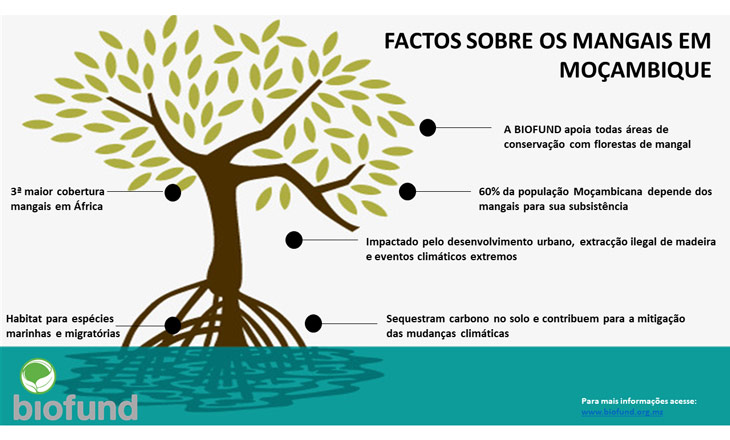Today, 26 July, the International Day for the Conservation of the Mangrove Ecosystems, is celebrated worldwide. In Mozambique the celebration is marked by the call for everyone to contribute to the conservation of mangroves.
Published at 26/07/2020
International Day for Conservation of Mangal Ecosystem - July 26, 2020

Mangrove forests are a coastal ecosystem in transition between the terrestrial and marine environment that has specific adaptations to respond to the extreme conditions of salinity, winds, and tidal cycle to which they are continuously exposed.
Mangroves are one of the most productive ecosystems on the planet. They are habitats for several marine species and it is estimated that ¾ of the species of commercial fishing importance depend on mangroves for their development.
Mangroves are responsible for providing fundamental environmental resources and services, ensuring the environmental integrity of the coastal strip, providing food, protecting local communities from extreme weather events, storing large amounts of carbon in the soil, and contributing to the mitigation of climate change impacts.
Mozambique has about 300,000 ha of mangrove forests, the third largest mangrove forest cover in Africa and the largest coverage on the continent’s eastern coast. In the country, mangrove forests occur in clusters along the entire coastline, being more abundant in the central and northern regions.
Despite their importance, mangroves in Mozambique are vulnerable to a number of threats from human activity. Mozambique recently took an important step in managing this key resource, approving the National Mangrove Management Strategy, the first legal instrument guiding the management and sustainable use of mangroves.
BIOFUND recognizes that mangroves are unique and vulnerable ecosystems and since 2018, have been supporting all the country’s conservation areas with mangrove forests. BIOFUND joins the International Mangroves Day celebrations to increase awareness of their importance and seek sustainable solutions for their management and conservation.

